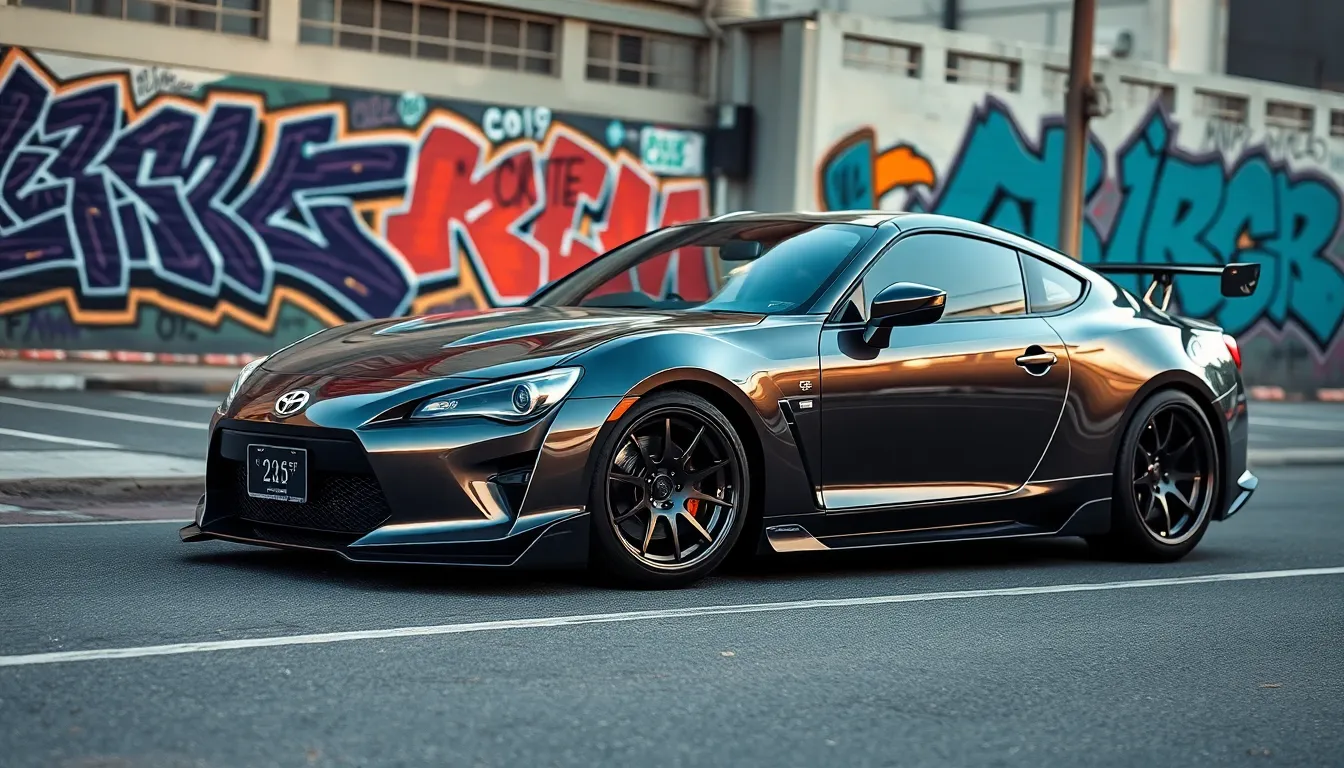We’ve all seen them gliding down highways with an unmistakable presence – Japanese cars that somehow manage to blend minimalist elegance with cutting-edge functionality. There’s something magnetic about the way these vehicles approach design that sets them apart from every other automotive philosophy on the planet.
Japanese automotive aesthetics aren’t just about creating beautiful cars. They’re about crafting experiences that speak to our deepest appreciation for clean lines, purposeful design and that perfect balance between form and function. From the sleek curves of a Mazda Miata to the aggressive stance of a Nissan GT-R, Japanese manufacturers have mastered the art of making every element serve both beauty and performance.
What makes Japanese car design so captivating? It’s the seamless integration of traditional Japanese principles like wabi-sabi and kanso into modern automotive engineering. We’re diving deep into this intriguing area where minimalism meets innovation and every design choice tells a story.
Define the Japanese Cars Aesthetic Philosophy
Japanese automotive design philosophy centers on creating vehicles that embody harmony between simplicity and sophistication. We’ll explore how this distinctive approach transforms ordinary transportation into extraordinary artistic expressions.
Minimalist Design Principles
Japanese car designers embrace the “less is more” philosophy that eliminates unnecessary visual clutter. Clean lines replace ornate decorations in models like the Honda S2000 and Toyota Supra. Geometric shapes create visual balance through carefully proportioned body panels and symmetrical design elements.
Surface treatments prioritize smooth transitions over sharp angles or complex curves. Japanese manufacturers avoid excessive chrome trim, oversized grilles, and flashy body modifications that distract from the core design. Interior spaces feature uncluttered dashboards with intuitive control layouts that put functionality first.
Color palettes tend toward monochromatic schemes using whites, grays, and subtle metallics. We see this restraint in vehicles like the Lexus LC series where single paint colors highlight the car’s natural proportions. Design elements serve multiple purposes rather than existing purely for decoration.
Functional Beauty Approach
Japanese automotive aesthetics prioritize form following function in every design decision. Aerodynamic efficiency shapes exterior panels while maintaining visual appeal in cars like the Nissan 370Z. Air vents integrate seamlessly into body designs to serve both cooling needs and styling purposes.
Interior components blend usability with visual harmony through thoughtful material selection. Soft touch plastics replace hard surfaces where drivers frequently interact with controls. Button placement follows ergonomic principles while maintaining clean visual lines across the dashboard.
Engineering answers become design features rather than hidden components. We observe this philosophy in the Subaru BRZ where visible suspension components contribute to the car’s mechanical aesthetic. Weight reduction efforts create purposeful cutouts and hollow sections that add visual interest.
Storage answers integrate into the overall cabin design without creating visual breaks. Japanese designers create seamless transitions between functional elements and decorative surfaces throughout the vehicle interior.
Cultural Influences on Automotive Design
Traditional Japanese principles deeply influence modern automotive styling choices across all major manufacturers. Wabi sabi philosophy embraces imperfection and natural aging in materials like leather seats that develop character over time. Ma (negative space) concepts guide interior layouts that provide visual breathing room between design elements.
Zen aesthetics promote balance and tranquility through symmetrical compositions in dashboard designs. Japanese automakers incorporate natural textures like wood grain and stone finishes that connect drivers with organic environments. These cultural elements appear in luxury brands like Infiniti and Acura where traditional craftsmanship meets modern technology.
Seasonal awareness influences color choices and material selection throughout vehicle lineups. Spring inspired pastels appear in limited edition models while autumn earth tones reflect changing natural cycles. We notice this cultural sensitivity in brands like Mazda where nature inspired themes guide both exterior and interior design decisions.
Craftsmanship traditions emphasize attention to detail in stitching patterns, surface finishes, and component assembly quality. Japanese manufacturers maintain these artisanal standards even in mass production vehicles through rigorous quality control processes.
Explore the Clean Lines and Geometric Shapes
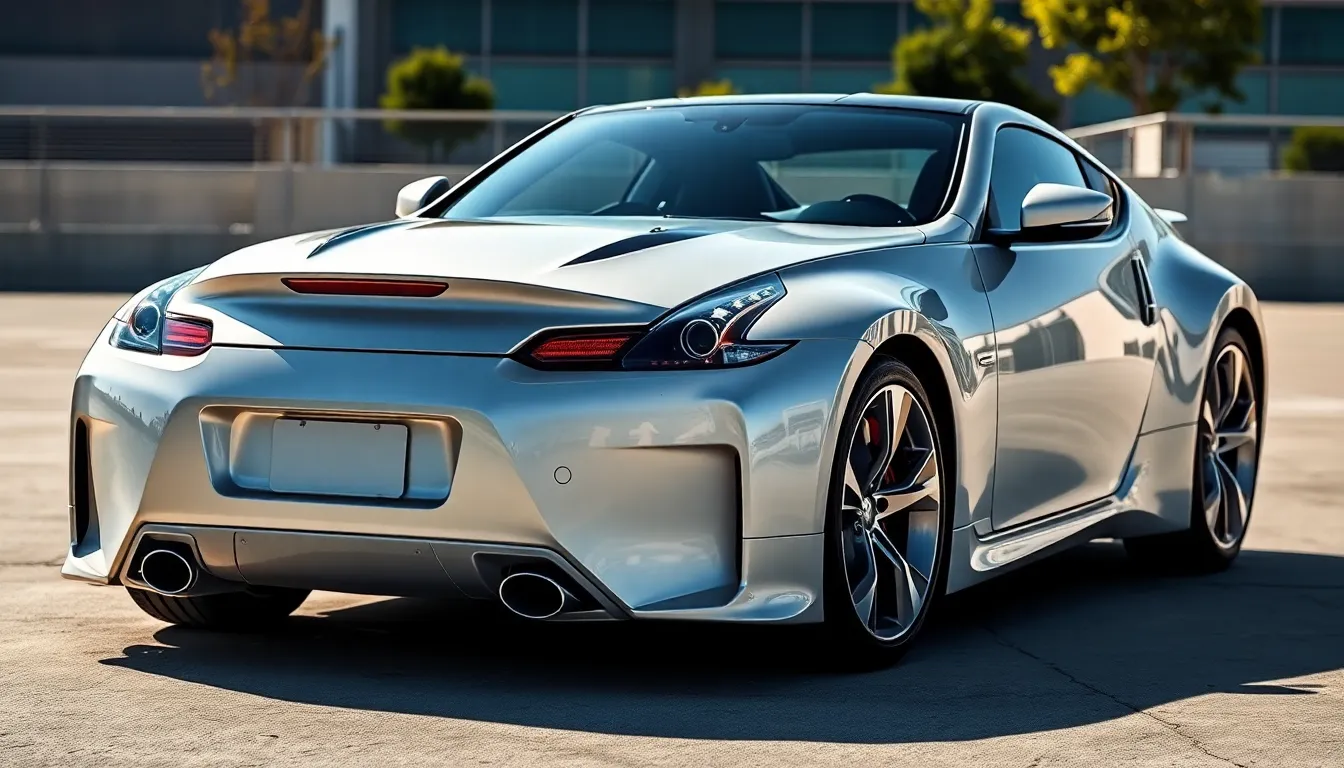
Japanese automotive designers masterfully balance angular precision with flowing elegance to create visually striking vehicles. We’ll examine how these geometric elements define the distinctive character of Japanese car aesthetics.
Sharp Angular Profiles
Angular design elements create dramatic visual impact through precise geometric cuts and bold surface transitions. The Nissan 350Z showcases razor-sharp body lines that emphasize its aggressive stance and performance-oriented character. We see similar approaches in the Subaru WRX STI, where angular fender flares and hood scoops create purposeful geometric forms that enhance both aesthetics and functionality.
Wedge-shaped silhouettes appear throughout Japanese sports car design, transforming basic transportation into sculptural statements. The Toyota MR2’s distinctive profile demonstrates how triangular forms can reduce visual weight while maintaining structural integrity. Modern interpretations like the Lexus LC500 push angular boundaries further, incorporating diamond-shaped grille patterns and sharp LED elements that fragment light across geometric surfaces.
Surface tension techniques allow designers to create ever-changing interplay between flat planes and sharp edges. The Honda NSX exemplifies this approach through its hexagonal design language, where angular air intakes and geometric body panels work together to channel airflow efficiently.
Flowing Curves and Aerodynamic Forms
Organic curves soften aggressive angles while maintaining the clean aesthetic principles central to Japanese design philosophy. The Mazda RX-8’s flowing roofline demonstrates how smooth transitions can enhance both visual appeal and aerodynamic performance. We observe this technique in the Infiniti Q60, where sweeping body lines create fluid movement that guides the eye naturally around the vehicle’s form.
Teardrop profiles optimize airflow while creating emotionally captivating silhouettes that connect with drivers on aesthetic levels. The Toyota Prius pioneered this approach in hybrid vehicle design, proving that efficiency and beauty can coexist harmoniously. Similarly, the Honda Insight uses gentle curves to achieve impressive drag coefficients while maintaining visual elegance.
Wind-sculpted surfaces reflect Japanese designers’ deep understanding of natural forces and their influence on form. The Nissan GT-R’s body incorporates subtle curve variations that manage airflow around critical performance areas, creating functional beauty that serves multiple purposes simultaneously.
Symmetrical Design Elements
Bilateral balance creates visual harmony through carefully matched left and right design elements that reinforce geometric precision. The Acura NSX demonstrates perfect symmetrical composition in its front fascia, where dual air intakes mirror each other while maintaining distinct functional purposes. We see this principle extended to interior layouts, where dashboard elements and control placements follow symmetrical patterns that enhance user experience.
Radial symmetry patterns appear in wheel designs and decorative elements that draw inspiration from traditional Japanese art forms. The Lexus LFA’s signature wheels showcase how geometric repetition can create visual rhythm while maintaining structural efficiency. Center console designs often incorporate circular or hexagonal patterns that echo the vehicle’s exterior geometric themes.
Proportional relationships govern how different design elements relate to each other within the overall composition. The Honda S2000’s proportions demonstrate golden ratio principles, where the relationship between hood length, cabin size, and rear deck creates naturally pleasing visual balance that feels both modern and timeless.
Examine the Distinctive Front End Styling
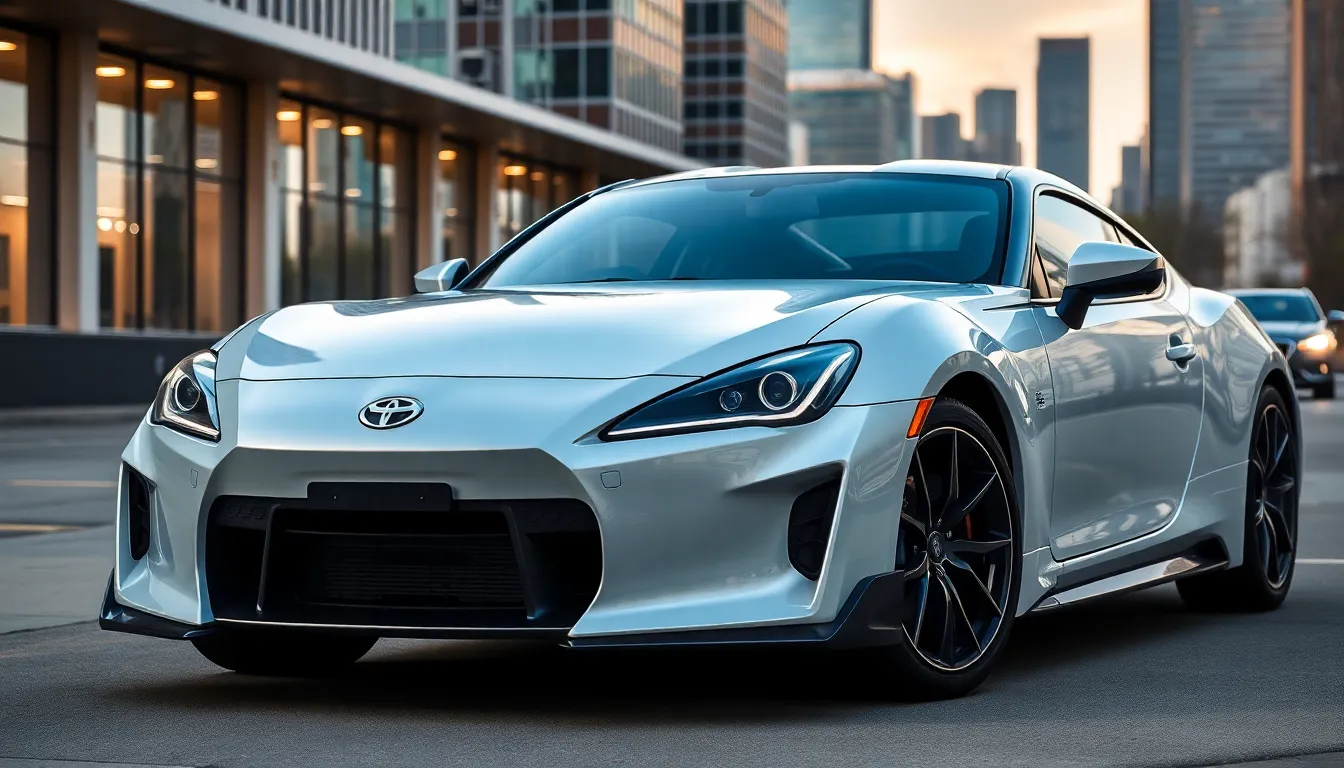
Japanese automotive design extends its geometric precision and cultural depth into front end aesthetics that immediately command attention. We’ll explore how these distinctive elements create the visual foundation that defines Japanese car identity.
Iconic Headlight Designs
Narrow horizontal strips dominate modern Japanese headlight aesthetics, creating focused beams of light that enhance the angular profiles we’ve discussed. The Nissan 370Z features razor-thin LED arrays that extend the car’s aggressive wedge silhouette forward, while the Honda Civic Type R uses triple-element headlights that mirror its sharp body lines.
Vertical integration techniques allow headlight clusters to flow seamlessly into the overall front end composition. Toyota’s latest Supra incorporates teardrop-shaped units that complement the vehicle’s organic curves, creating visual tension between geometric and flowing elements. Subaru’s STI models use hexagonal housings that reinforce the brand’s angular design language.
Adaptive lighting technology transforms functional necessity into aesthetic opportunity through precisely engineered lens shapes. Mazda’s signature lighting creates distinctive daytime running patterns that enhance the brand’s flowing design philosophy, while Lexus spindle grille headlights use L-shaped elements that echo traditional Japanese calligraphy strokes.
Signature Grille Patterns
Hexagonal configurations establish brand identity through geometric repetition that reflects Japanese attention to detail. Subaru’s distinctive six-sided grille patterns create visual harmony across their entire lineup, from the compact Impreza to the rugged Outback. These geometric shapes provide functional airflow while maintaining the clean lines essential to Japanese automotive aesthetics.
Spindle-shaped openings transform traditional grille concepts into sculptural statements that embody cultural design principles. Lexus pioneered this approach with aggressive hourglass forms that channel airflow efficiently while creating dramatic visual impact. The design evolution from simple rectangles to complex three-dimensional surfaces demonstrates Japanese innovation in functional beauty.
Mesh integration patterns offer subtle texture variations that enhance surface tension techniques without overwhelming the minimalist design philosophy. Acura’s diamond-pattern grilles provide visual interest through repeated geometric elements, while Honda’s horizontal slat arrangements maintain clean simplicity. These patterns create depth perception that adds sophistication to otherwise simple front end compositions.
Bumper Integration Techniques
Seamless body panel transitions eliminate visual disruption between bumper and hood sections, maintaining the unified aesthetic that characterizes Japanese design philosophy. The Mazda Miata demonstrates this principle through smooth surface flows that guide the eye naturally across the front end, while the Toyota GT86 uses subtle creases that enhance its wedge-shaped silhouette.
Functional air intake positioning transforms necessary cooling requirements into design opportunities that complement the overall aesthetic vision. Nissan GT-R engineers position brake cooling ducts as visual focal points that enhance the car’s aggressive character, while Honda NSX designers integrate air management systems that maintain clean surface tension.
Protective element styling ensures practical components like fog light housings and splash guards contribute to rather than detract from the overall design harmony. Subaru integrates protective elements using the same geometric language found throughout their vehicles, while Toyota positions functional components to enhance rather than interrupt the flowing curves that define their aesthetic approach.
Analyze the Interior Design Elements
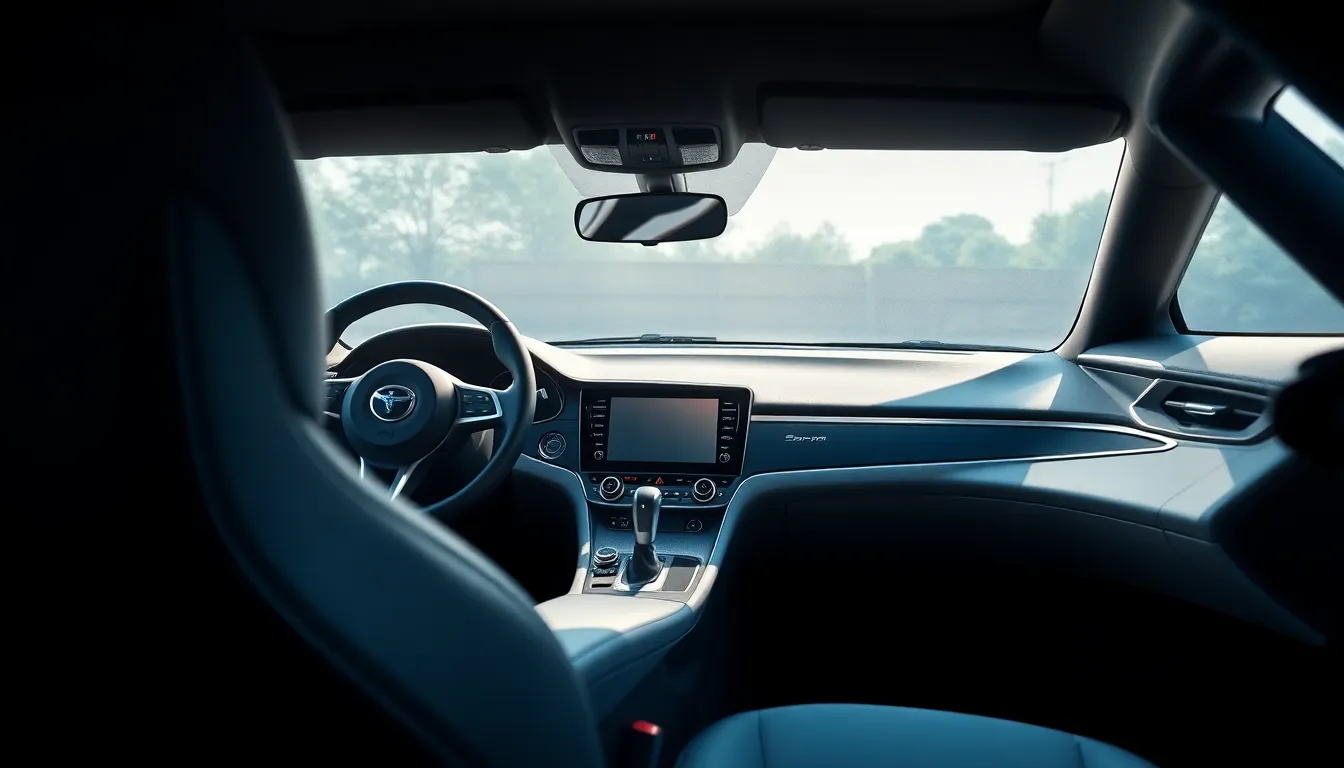
Japanese automotive interiors extend the same minimalist philosophy found in exterior design, creating cohesive environments that prioritize both aesthetic refinement and ergonomic excellence.
Dashboard Layout Philosophy
Driver-centric cockpit arrangements define the foundation of Japanese interior aesthetics, positioning essential controls within natural reach zones. We observe this principle in the Honda S2000’s focused instrument cluster and the Nissan GT-R’s multi-function display layout, where information hierarchy guides visual flow from critical gauges to secondary features.
Horizontal design elements dominate dashboard compositions, creating visual width that enhances spatial perception within compact cabins. The Toyota Supra’s sweeping dashboard lines and Mazda MX-5’s continuous flow demonstrate how geometric continuity connects disparate interior components into unified compositions.
Asymmetrical balance techniques appear in premium models like the Lexus LC 500, where the center console angles toward the driver while maintaining visual equilibrium through carefully proportioned surfaces. This approach creates ever-changing tension without compromising functional accessibility or ergonomic comfort.
Zone-based control groupings separate climate, audio, and navigation functions into distinct areas, reducing cognitive load during operation. Subaru’s three-tier dashboard architecture exemplifies this strategy, organizing controls by frequency of use while maintaining clean visual separation between functional zones.
Material Selection and Textures
High-quality synthetics replace traditional leather in many Japanese interiors, offering superior durability and consistent appearance over time. Models like the Honda Civic Type R feature Alcantara-wrapped surfaces that provide tactile grip while maintaining the clean aesthetic associated with Japanese design philosophy.
Carbon fiber accents appear strategically throughout performance-oriented cabins, adding technical authenticity without overwhelming visual compositions. The Nissan 370Z integrates these elements into door panels and center console trim, creating textural contrast against smooth plastic surfaces.
Piano black finishes dominate contemporary Japanese interiors, reflecting light to create depth perception within confined spaces. Toyota applies this treatment to the Camry’s center console and Corolla’s dashboard trim, achieving premium appearances through material selection rather than complex surface geometries.
Soft-touch materials concentrate in high-contact areas like armrests and gear shifters, while harder plastics occupy less frequently touched surfaces. This selective application maintains cost efficiency while ensuring comfort in areas that matter most to daily driving experiences.
Color Coordination Principles
Monochromatic palettes form the backbone of Japanese interior color schemes, utilizing varying shades of single hues to create visual depth without chromatic complexity. We see this approach in the Mazda CX-5’s charcoal interior and the Honda Accord’s beige cabin, where tonal variations provide subtle contrast.
Accent color placement follows the 60-30-10 rule, with dominant neutral tones comprising most surfaces, secondary colors appearing in seat materials, and bold accents limited to small details like stitching or trim pieces. The Subaru BRZ demonstrates this principle through its black base, gray secondary elements, and red accent stitching.
Natural lighting considerations influence color selection, with warm undertones chosen for daytime visibility and cooler tones selected for nighttime ambiance. Toyota’s ambient lighting systems adapt color temperature based on exterior conditions, maintaining visual comfort throughout different driving scenarios.
Seasonal color inspiration appears in limited edition models, with cherry blossom pinks and autumn oranges referencing traditional Japanese aesthetics. These applications remain subtle, typically appearing in seat piping or dashboard accents rather than dominating entire interior schemes.
Discover the Wheel and Stance Culture
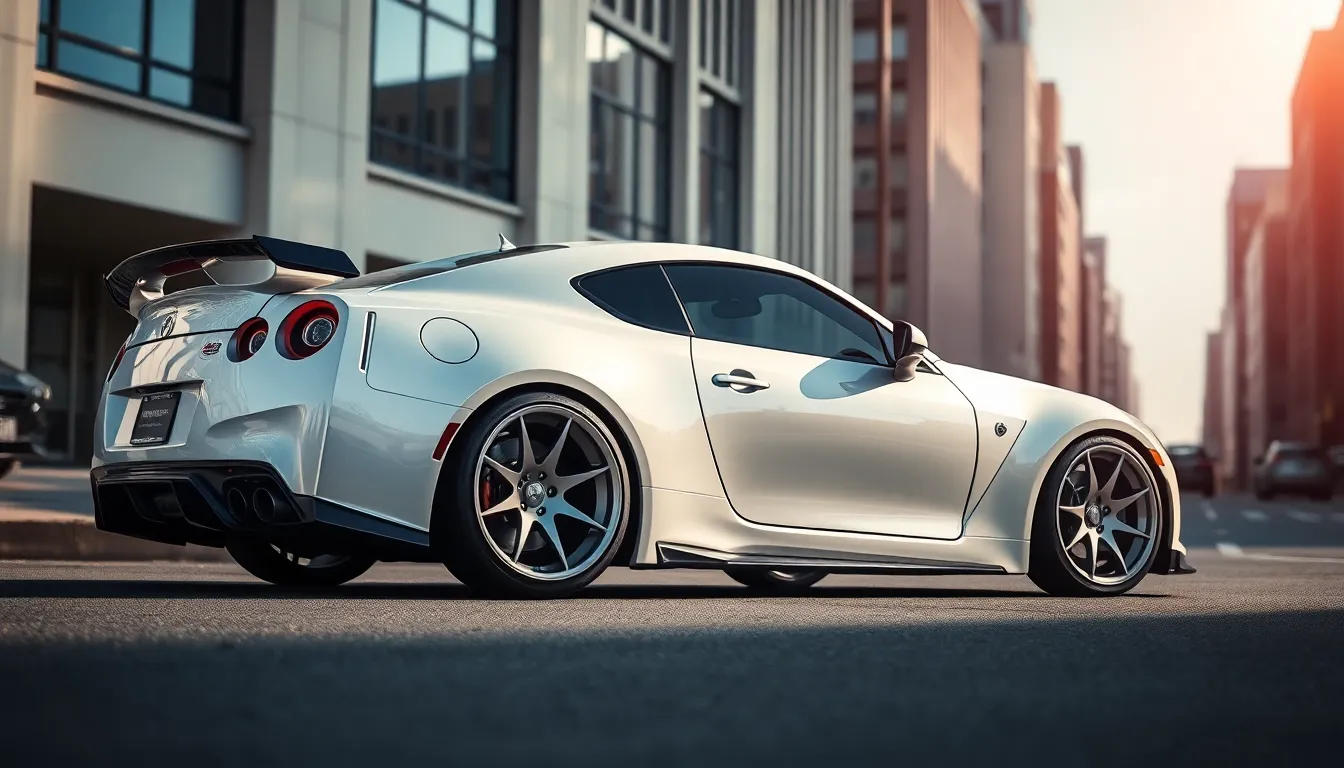
Japanese car enthusiasts have transformed wheel selection and suspension modifications into art forms that perfectly complement the minimalist design principles we’ve explored. This culture extends beyond functionality to create visual statements that enhance each vehicle’s geometric proportions.
Japanese Wheel Aesthetics
Work Emotion wheels define the pinnacle of Japanese wheel craftsmanship with their distinctive spoke patterns and lightweight construction. These forged aluminum designs feature angular geometries that mirror the sharp profiles found in models like the Nissan 350Z and Honda NSX. Rays Engineering produces another iconic option through their TE37 series, which utilizes six-spoke configurations to create perfect symmetrical balance.
BBS wheels from Japan showcase mesh patterns that complement organic curves while maintaining structural integrity. Their LM and RS designs feature intricate spoke arrangements that enhance visual depth without compromising the clean lines essential to Japanese automotive aesthetics. SSR wheels offer additional choices through their Professor and Formula series, which incorporate subtle curves and precise machining tolerances.
Deep dish construction creates dramatic visual impact by extending the wheel’s outer lip several inches beyond standard profiles. This technique transforms ordinary wheels into sculptural elements that emphasize the vehicle’s stance and proportional relationships. Polished finishes reflect light in ways that accentuate angular body panels while maintaining the sophisticated appearance that defines Japanese design philosophy.
Lowered Suspension Trends
Coilover systems represent the most popular method for achieving the perfect stance in Japanese car culture. Brands like Tein and KW Suspension offer adjustable height settings that typically lower vehicles between 1.5 to 3 inches from factory specifications. These systems maintain the handling characteristics that make Japanese sports cars legendary while creating the visual drama that enthusiasts desire.
Air suspension setups provide ultimate flexibility through electronically controlled ride height adjustments. Systems from Air Lift Performance and Accuair allow drivers to achieve extreme lowered positions for shows while maintaining practical ride heights for daily driving. This technology enables cars like the Toyota Supra and Mazda RX-7 to transform their visual presence instantly.
Static drops using lowering springs offer permanent height reductions that emphasize commitment to the aesthetic. Eibach Pro Kit and H&R Sport Springs typically reduce ride height by 1 to 2 inches while preserving suspension geometry. This approach creates consistent visual results that complement the horizontal design elements found throughout Japanese automotive interiors.
Slam culture pushes lowering to extreme levels where vehicles achieve minimal ground clearance for maximum visual impact. This trend originated in Japan’s VIP car scene and has spread to sports car applications where function follows form in pursuit of perfect proportions.
Camber and Fitment Styles
Negative camber creates the signature wheel stance that defines Japanese car culture by angling wheels inward at the top. Typical settings range from -2 to -8 degrees, with extreme builds reaching -15 degrees or more. This adjustment transforms the wheel and tire combination into geometric art while affecting handling characteristics in dramatic ways.
Flush fitment positions wheels perfectly aligned with fender edges to create seamless transitions between body panels and rolling stock. Achieving this look requires precise offset calculations and often custom spacers to dial in the exact positioning. The result emphasizes the clean lines and proportional relationships that characterize Japanese design principles.
Poke fitment extends wheels beyond fender edges by several millimeters to create visual tension and highlight wheel design details. This approach works particularly well with deep dish wheels where the extended lip becomes a focal point. Cars like the Nissan Silvia and Toyota AE86 showcase how poke fitment enhances their angular profiles.
Stretch tire mounting involves installing narrower tires on wider wheels to create distinctive sidewall profiles that emphasize wheel design. Common combinations include 215 tires on 9-inch wheels or 225 tires on 10-inch wheels. This technique originated in Japanese drift culture where tire flexibility provided performance advantages while creating unique aesthetics.
Hellaflush movement combines extreme lowering with aggressive wheel fitment to achieve maximum visual impact. This style requires careful consideration of suspension geometry, wheel specifications, and body modifications to create cohesive results that maintain the sophisticated appearance essential to Japanese automotive culture.
Understand the Color Palette Preferences
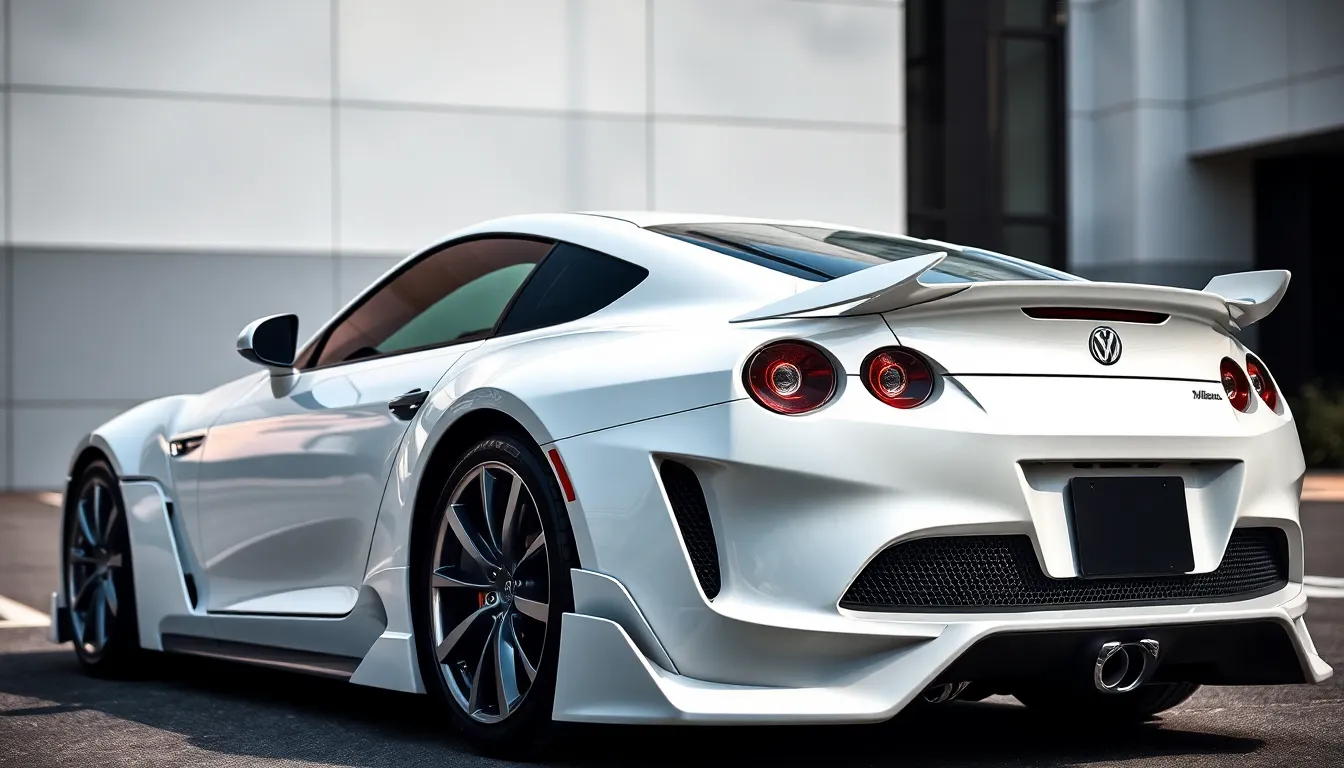
Japanese automotive design philosophy extends beyond form and function to embrace sophisticated color strategies that enhance the minimalist aesthetic while creating emotional connections with drivers.
Popular Japanese Car Colors
Championship White remains the most iconic color choice among Japanese performance vehicles, establishing a pure canvas that highlights angular body lines and aerodynamic elements. Honda popularized this shade through the Integra Type R and S2000, creating a timeless association between white paint and track-focused engineering. Nissan’s Pearl White achieves similar visual impact on the GT-R and 370Z, allowing aggressive design elements to command attention without color distraction.
Midnight Purple represents the pinnacle of Japanese exotic color selection, originally developed for the Nissan Skyline GT-R R34 as a limited production option. This deep metallic hue shifts between dark blue and purple depending on lighting conditions, embodying the mysterious elegance found in traditional Japanese aesthetics. Toyota’s Midnight Black Metallic serves a similar purpose on the Supra, creating depth that accentuates sculpted surfaces.
Gun Metallic finishes bridge the gap between understated sophistication and aggressive styling, appearing across multiple Japanese brands from Subaru’s Dark Gray Metallic to Mazda’s Machine Gray. These neutral tones complement both angular design elements and flowing curves while maintaining the clean aesthetic principles central to Japanese automotive philosophy.
Pearl and Metallic Finish Options
Pearl finishes transform standard colors into ever-changing surfaces that respond to changing light conditions, reflecting the Japanese appreciation for seasonal awareness and natural beauty. Subaru’s Crystal Black Silica demonstrates this technique on the WRX STI, where embedded pearl particles create subtle color shifts that enhance the vehicle’s aggressive stance. Acura’s Phantom Violet Pearl on the NSX achieves similar results, adding visual complexity without compromising the clean lines.
Metallic paint technologies developed by Japanese manufacturers use aluminum flakes and mica particles to create depth and dimensionality in vehicle surfaces. Lexus leads this innovation with their Sonic Titanium and Atomic Silver finishes, which highlight the spindle grille design while maintaining the brand’s commitment to refined elegance. Honda’s Polished Metal Metallic showcases similar advancement on the Civic Type R, where the finish amplifies aerodynamic bodywork details.
Three-stage pearl applications represent the most advanced Japanese color techniques, combining base coat, pearl layer, and clear coat to achieve extraordinary visual depth. Mazda’s Soul Red Crystal Metallic exemplifies this approach, using specially developed red pigments that maintain color saturation across different viewing angles while complementing the brand’s KODO design language.
Matte and Satin Paint Trends
Matte finishes have gained important popularity among Japanese tuning enthusiasts who seek to emphasize geometric body panels and aggressive fitment styles without reflective distractions. Subaru’s limited edition STI models feature Matte White and Matte Black options that highlight the sharp character lines and functional aerodynamic elements. These non-reflective surfaces create visual tension that complements negative camber and lowered suspension setups.
Satin paint applications offer a compromise between matte and gloss finishes, providing subtle shine that maintains the sophisticated aesthetic principles of Japanese design. Nissan’s Nismo division utilizes satin treatments on special edition models, where the finish enhances carbon fiber components and functional air intakes. Toyota applies similar techniques to limited TRD Pro models, where satin accents highlight performance-oriented design elements.
Factory matte options from Japanese manufacturers demonstrate the mainstream acceptance of these alternative finish techniques, with Honda offering Matte Black on certain Civic Type R variants and Mazda providing Polymetal Gray on various models. These finishes require specialized maintenance techniques but deliver unique visual impact that aligns with the individualistic nature of Japanese car culture, particularly among enthusiasts who prioritize aesthetic perfection over conventional paint durability.
Investigate the Performance-Inspired Visual Cues
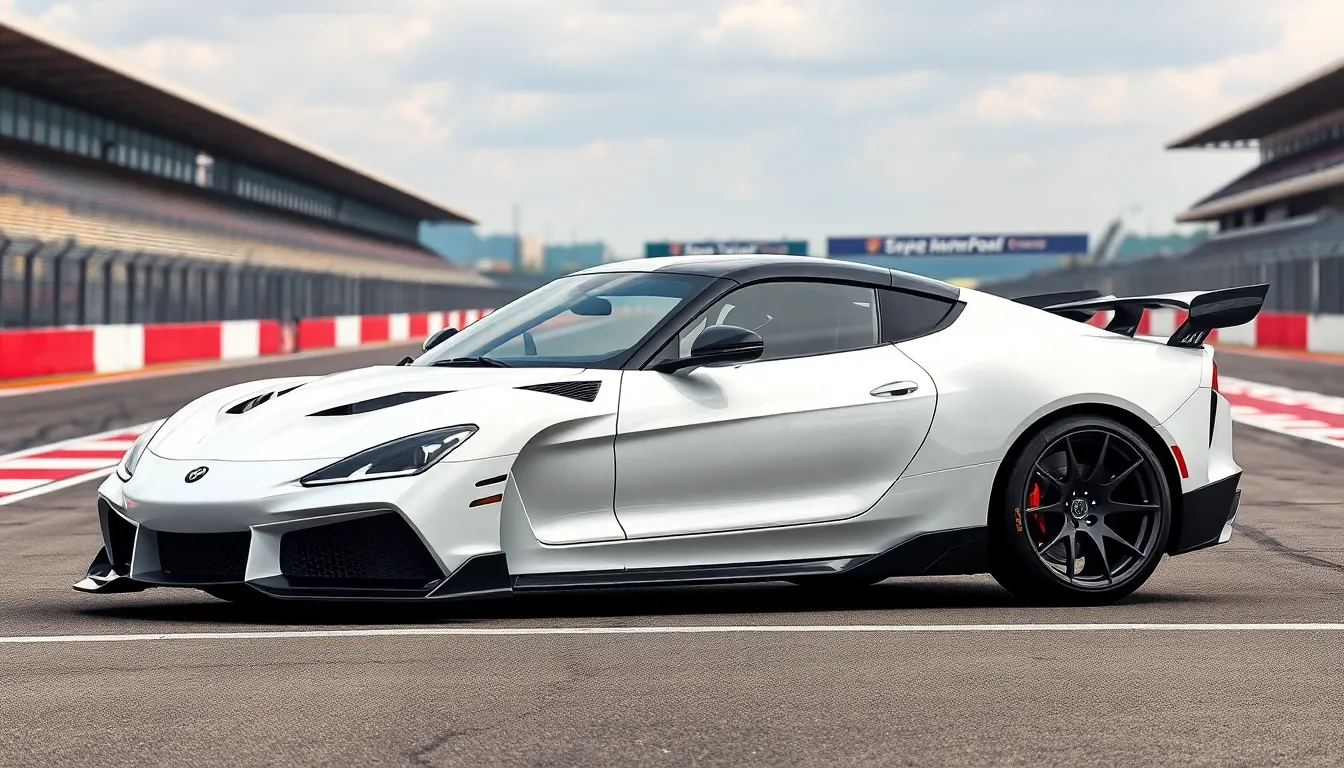
Performance inspired design elements bridge the gap between track ready functionality and aesthetic excellence in Japanese automotive culture. These modifications enhance both visual drama and aerodynamic efficiency.
Aerodynamic Body Kits
Factory inspired aero packages transform vehicle profiles through scientifically designed components that reduce drag while maintaining the clean aesthetic principles of Japanese design. Companies like Mugen, Spoon Sports, and Top Secret develop body kits that complement original design language rather than overwhelming it.
Front splitters and side skirts create continuous airflow paths along vehicle surfaces, generating downforce at speed while adding aggressive angular elements that enhance the minimalist profiles we see in models like the Honda NSX-R and Toyota Supra RZ. These components typically feature carbon fiber construction that aligns with the lightweight philosophy.
Rear diffusers and wing elements complete the aerodynamic package by managing airflow separation at the vehicle’s trailing edge. Notable examples include the distinctive rear spoiler on the Subaru WRX STI and the active wing system of the Nissan GT-R, both designed to provide functional downforce while serving as signature visual statements.
Canard fins and dive planes add technical complexity to front bumper designs, creating multiple surface angles that channel air around wheel wells and brake components. We observe these elements prominently on track focused variants like the Honda Civic Type R and Mitsubishi Lancer Evolution, where form follows aerodynamic function.
Functional Hood Vents and Scoops
Top mount intercooler scoops represent the most iconic functional design element in Japanese performance cars, with the Subaru WRX STI hood scoop serving as the benchmark for integrating cooling requirements with visual drama. This component channels cool air directly to the intercooler while creating a distinctive profile element.
Heat extraction vents positioned strategically along hood surfaces allow hot air to escape from engine compartments, reducing underhood temperatures while adding geometric design elements. Models like the Mitsubishi Lancer Evolution and Honda S2000 CR feature carefully positioned vents that maintain clean lines while providing thermal management.
Brake cooling ducts integrated into front bumper designs and wheel well areas channel airflow to brake components, essential for maintaining stopping power during spirited driving. Japanese manufacturers excel at concealing these functional elements within the overall design language, as seen in the integrated approach of the Nissan 370Z Nismo.
Engine bay ventilation systems create negative pressure zones that assist in heat removal while adding technical visual interest to engine compartments. Carbon fiber strut tower braces and aluminum radiator shrouds exemplify how functional components become aesthetic elements in Japanese performance cars.
Sport-Tuned Exhaust Systems
Cat back exhaust configurations from manufacturers like HKS, Greddy, and Tomei create distinctive sound signatures while featuring polished titanium or stainless steel tips that complement the clean aesthetic approach. These systems typically reduce weight while improving flow characteristics and adding visual appeal through carefully positioned exhaust outlets.
Quad tip arrangements popularized by models like the Nissan GT-R and Lexus IS-F create symmetrical rear end compositions that emphasize the wide stance aesthetic while providing the exhaust flow capacity needed for high performance applications. The geometric positioning of these tips reinforces the angular design themes.
Side exit exhaust systems found on track focused models like the Honda NSX-R and certain Lotus variants built in Japan create dramatic visual and auditory experiences while reducing exhaust system complexity. These configurations showcase the Japanese approach to functional design that becomes a defining aesthetic element.
Variable valve exhaust technology allows drivers to adjust sound levels and backpressure characteristics while maintaining visual consistency through electronically controlled valve systems. Modern applications in the Toyota Supra and Nissan Z demonstrate how technology integration enhances both performance capability and user experience without compromising design purity.
Learn About Brand-Specific Design Languages
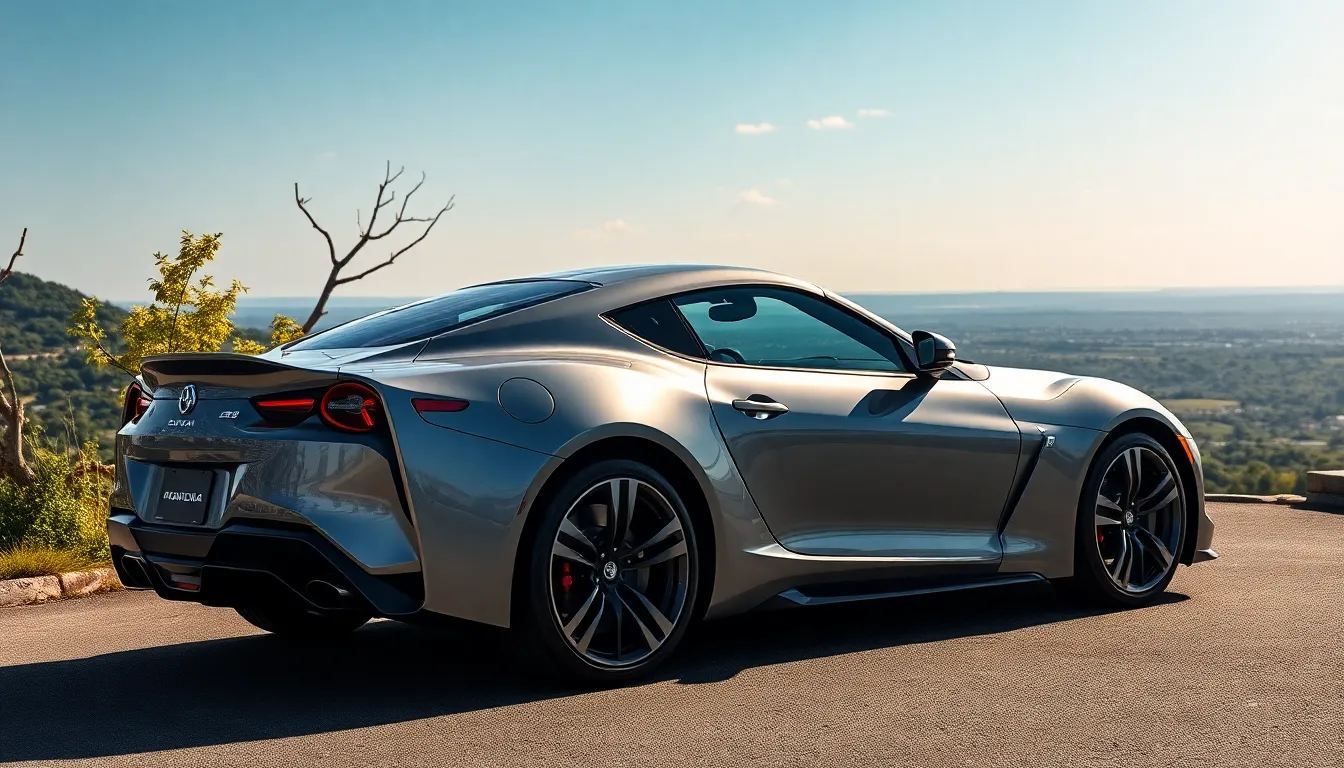
Japanese automakers have developed distinctive visual identities that set them apart in the global automotive industry. Each brand’s design language reflects unique cultural values and engineering philosophies that resonate with enthusiasts worldwide.
Toyota’s Design Philosophy
Toyota’s Keen Look design philosophy emphasizes emotional connection through sharp, angular styling elements that create ever-changing visual tension. The brand’s signature spindle grille architecture, first popularized by Lexus, now influences mainstream Toyota models like the Camry and RAV4. This design approach combines traditional Japanese restraint with contemporary aggression.
Katana-inspired body lines appear throughout Toyota’s current lineup, creating sword-like character lines that extend from headlights to taillights. The Supra’s dramatic proportions showcase this philosophy perfectly, with its long hood and compact cabin creating a visual forward momentum even when stationary. These geometric elements reflect the Japanese concept of ma, or purposeful negative space.
Material authenticity guides Toyota’s interior design choices, incorporating genuine carbon fiber and aluminum trim pieces that enhance the minimalist aesthetic. The brand’s color palette preferences lean toward sophisticated metallics and pearl finishes that shift subtly in different lighting conditions. This approach creates depth without visual complexity, maintaining the clean lines that define Japanese automotive aesthetics.
Honda’s Aesthetic Approach
Honda’s Design DNA centers on the concept of “Man Maximum, Machine Minimum,” prioritizing human-centered proportions and intuitive functionality. The Civic Type R exemplifies this philosophy with its aggressive yet purposeful aerodynamic elements, including functional air vents and dramatic rear wing designs. Each styling element serves both aesthetic and performance purposes.
Origami-inspired surfaces characterize Honda’s modern design language, creating sharp creases and folded metal effects that catch light dynamically. The NSX demonstrates this technique through its sculptural body panels that appear to wrap around the mechanical components beneath. These angular surfaces create visual interest while maintaining the brand’s commitment to aerodynamic efficiency.
Cockpit architecture reflects Honda’s racing heritage, with driver-focused interiors that emphasize horizontal lines and intuitive control placement. The brand’s signature red accent stitching and aluminum pedals create cohesive visual themes across model lines. Honda’s approach to minimalism includes removing unnecessary decorative elements while improving functional beauty through purposeful design choices.
Nissan’s Visual Identity
Nissan’s Emotional Geometry design language combines flowing curves with sharp angles to create vehicles that appear both elegant and powerful. The 370Z showcases this duality through its muscular fender flares and sleek roofline that create visual tension between organic and geometric forms. This approach reflects the Japanese aesthetic principle of contrasting elements achieving harmony.
V-Motion grille design serves as Nissan’s primary brand identifier, creating a distinctive V-shaped opening that extends into the headlight assemblies. The GT-R takes this concept further with its functional air intake design that channels cooling air while maintaining visual drama. These elements demonstrate how functional requirements can become defining aesthetic features.
Floating roof architecture appears across Nissan’s lineup, using blackened pillars to create the illusion that the roof hovers above the cabin. The brand’s interior philosophy emphasizes driver and passenger comfort through ergonomic seat designs and intuitive technology integration. Nissan’s color strategies often feature deep, rich hues like Gun Metallic and Magnetic Black that enhance the vehicle’s sculptural qualities while reflecting light in compelling ways.
Explore the Modified Car Scene Influence
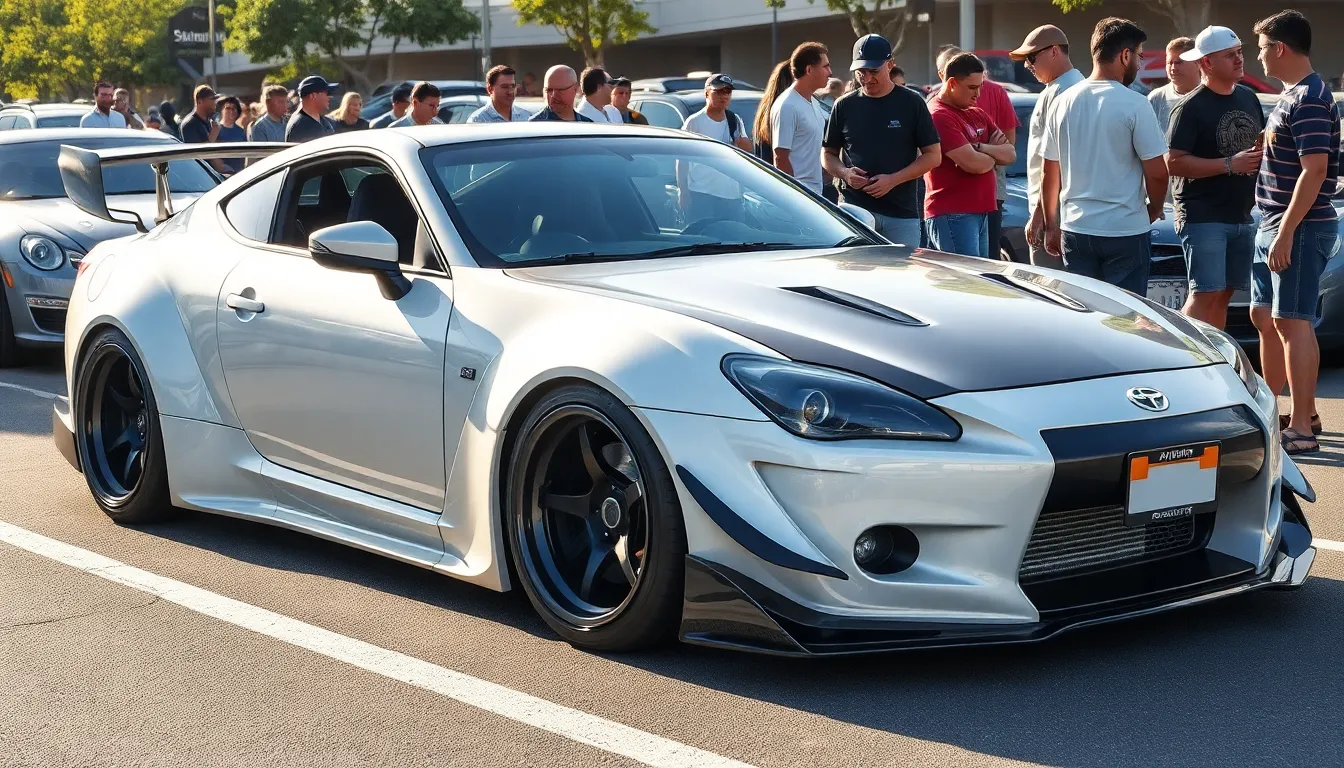
Japanese car modification culture has fundamentally shaped global automotive aesthetics through its distinctive approach to performance enhancement and visual refinement.
JDM Tuning Aesthetics
Clean execution defines the foundation of authentic JDM tuning, where every modification serves both functional and aesthetic purposes. Tuners like HKS, Mugen, and Spoon Sports have established industry standards through their minimalist approach to performance enhancement. Wide-body kits from companies like Rocket Bunny and Liberty Walk demonstrate how aggressive modifications can maintain the clean lines that characterize Japanese design philosophy.
Understated elegance separates JDM tuning from flashier modification styles. Engine bay presentations showcase meticulous attention to detail through color-coordinated components, polished intake manifolds, and strategically placed strut tower bars. Suspension modifications focus on achieving the perfect balance between form and function through high-quality coilover systems and precision-engineered control arms.
Quality over quantity drives component selection in authentic JDM builds. Enthusiasts prioritize proven brands like Jun Auto, Top Secret, and Voltex for their reputation of delivering performance gains without compromising aesthetic appeal. Interior modifications maintain the driver-focused philosophy through sport seats from Recaro or Bride, while gauge clusters from Defi provide essential information with clean, readable displays.
Drift Car Visual Modifications
Aggressive styling characterizes the drift car aesthetic, where function-driven modifications create distinctive visual signatures. Front-mounted intercoolers become prominent design elements that enhance both cooling efficiency and aggressive front-end appearance. Extended front splitters and canards provide necessary downforce while creating sharp, angular profiles that complement the minimalist design ethos.
Widened fenders accommodate larger wheel and tire combinations essential for competitive drifting performance. Overfenders from companies like Origin and Pandem create muscular silhouettes that maintain proportional balance with the vehicle’s overall design. Rear spoilers and wings serve dual purposes by providing stability during high-angle slides while adding visual drama to the car’s rear profile.
Battle damage acceptance reflects the authentic drift culture aesthetic. Scratched paint, dented panels, and zip-tie repairs become badges of honor that demonstrate active participation in the sport. This weathered appearance aligns with the wabi-sabi philosophy by finding beauty in imperfection and impermanence, creating a unique aesthetic that celebrates both form and function.
Show Car Presentation Standards
Flawless execution defines competitive show car standards in Japanese automotive culture. Paint preparation requires multiple stages of correction, polishing, and protection to achieve mirror-like finishes that reflect light uniformly. Engine bay detailing involves powder-coating components, custom plating, and meticulous wire management to create visual harmony throughout the mechanical systems.
Attention to detail extends to every visible component from brake caliper colors to custom interior trimwork. Wheel selection emphasizes rare or limited-edition designs from prestigious manufacturers like Work, Rays, and SSR that complement the vehicle’s overall aesthetic theme. Suspension setups achieve precise ride heights that create perfect gap relationships between body panels and wheel wells.
Presentation consistency maintains thematic coherence across all modification elements. Color schemes flow seamlessly from exterior paint through interior accents to engine bay components. Custom fabrication work demonstrates the highest levels of craftsmanship through seamless welds, precise fitment, and innovative answers that enhance both functionality and visual appeal while respecting the original design language.
Conclusion
Japanese car aesthetics represent a masterful synthesis of cultural heritage and modern innovation that continues to influence automotive design worldwide. We’ve witnessed how these vehicles transcend mere transportation to become rolling sculptures that embody philosophical principles of harmony and restraint.
The enduring appeal of Japanese automotive design lies in its ability to evolve while maintaining core aesthetic values. From cutting-edge manufacturers to passionate enthusiasts who push creative boundaries through modifications we see a commitment to excellence that never compromises on visual integrity.
This unique approach to automotive artistry has created a global community of admirers who appreciate the thoughtful balance between performance and beauty. Japanese cars don’t just move us physically—they inspire us to see transportation as an expression of refined taste and purposeful design that will continue shaping automotive culture for generations to come.
Frequently Asked Questions
What defines Japanese automotive design philosophy?
Japanese automotive design philosophy centers on achieving harmony between simplicity and sophistication, transforming ordinary transportation into extraordinary artistic expressions. It emphasizes minimalist principles where clean lines and geometric shapes replace visual clutter, while maintaining a perfect balance between form and function in every design element.
How do traditional Japanese principles influence car design?
Traditional Japanese concepts like wabi-sabi and Zen aesthetics guide automotive design choices in materials, layouts, and overall philosophy. Seasonal awareness influences color palettes and design themes, reflecting a deep connection to nature, while craftsmanship traditions ensure meticulous attention to detail even in mass-produced vehicles.
What are the key design elements in Japanese car aesthetics?
Japanese car aesthetics feature sharp angular profiles, flowing curves, and symmetrical design elements. Angular designs create dramatic visual impact, while organic curves optimize aerodynamic performance. Surface tension techniques and wedge-shaped silhouettes transform vehicles into sculptural statements that balance aggressive styling with functional excellence.
How do Japanese automakers approach front-end styling?
Japanese front-end styling focuses on iconic headlight designs, signature grille patterns, and seamless bumper integration. Razor-thin LED arrays, hexagonal grilles, and functional air intake positioning create distinctive brand identities while maintaining clean lines and aerodynamic efficiency that enhance the overall aesthetic harmony.
What characterizes Japanese car interior design?
Japanese car interiors extend minimalist philosophy to create driver-centric cockpit arrangements with horizontal design elements and asymmetrical balance techniques. High-quality synthetics, carbon fiber accents, and monochromatic color palettes contribute to aesthetic refinement while prioritizing ergonomic excellence and functional accessibility.
What is the significance of wheel and stance culture in Japan?
Japanese wheel and stance culture elevates wheel selection and suspension modifications into art forms that enhance minimalist design principles. Brands like Work Emotion and Rays Engineering create wheels with angular geometries, while coilover systems and air suspension allow for dramatic visual effects without compromising performance.
How do Japanese automakers use color in their designs?
Japanese automakers employ sophisticated color strategies that enhance minimalist aesthetics and create emotional connections. Iconic colors like Championship White and Midnight Purple showcase depth and character, while pearl and metallic finishes reflect seasonal awareness and natural beauty, aligning with Japanese cultural values.
What role do performance modifications play in Japanese car culture?
Performance modifications in Japanese car culture bridge track-ready functionality with aesthetic excellence. Companies like Mugen and Spoon Sports develop aerodynamic body kits that enhance vehicle profiles while maintaining clean aesthetic principles, ensuring that functional elements become defining design features.
How do Japanese brands differ in their design approaches?
Each Japanese automaker has distinct design languages reflecting unique cultural values. Toyota emphasizes emotional connection through katana-inspired styling, Honda focuses on human-centered proportions, and Nissan uses Emotional Geometry combining flowing curves with sharp angles, all while maintaining minimalist aesthetics and performance functionality.
What is the global influence of Japanese car modification culture?
Japanese car modification culture influences global automotive aesthetics through clean execution and meticulous craftsmanship standards. JDM tuning emphasizes functional and aesthetic purposes, with drift car aesthetics and show car presentations setting industry benchmarks that celebrate the unique blend of performance, artistry, and cultural depth.

